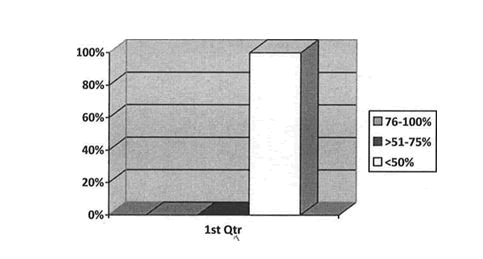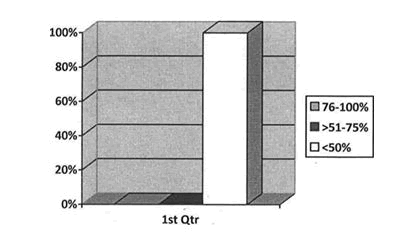Research Article - (2021) Volume 9, Issue 12
A Descriptive Study to Assess the Knowledge and Attitude Regarding Cancer Cervix among Women
*Correspondence: AR. Bharathi, Department of Nursing, Bharath Institute of Higher Education and Research, Selaiyur, Chennai,Tamil Nadu, India, Email:
Abstract
Reproductive life is a very personal, private and secret matter in our society. Women are often the silent sufferers of many reproductive health problems that can be easily detected and prevented. Out of reproductive health problems cancer cervix is a feared and dreaded disease for several reasons. It spells pain, agony, despair, gloom and death. It is curable and there is life after cancer. The Present study includes to assess the knowledge and attitude regarding cancer cervix among mothers of reproductive age group.Keywords
Assess, Reproductive life, Women, cancer cervix, venereal infections, uterine, cytological screening and testingIntroduction
In the light of present knowledge, early cancer detection and precancerous conditions help to lead a healthy life. Cancer of the uterine cervix is still the most common cancer among women in India. Improvement in living standards and access to health care as reduced the rate of occurrence of cervical cancer in certain states like Kerala. Early age at first sexual intercourse, multiple sexual partners, poor sexual hygiene, repeated child birth prolonged use of oral contraceptives, venereal infections and vitamin A and C deficiency are some of the reproductive risk factors resulted in increased in the incident of cervical cancer [1]. World Health Organization (1997) had estimated that globally 51.3 million deaths occur due to cancer cervix. More than 7.12 million are estimated by the year 2010 and may go up to 8 million in another one year [2].
The population based cancer registry of Chennai for the year 1996 from ADAYAR cancer institute showed that 27.8 % of female cancer were cancer cervix the hospital data clearly indicates that two organs sits most commonly invaded are uterine cervix in women and or pharynx in both sex. Out of 50,093 patients who were attended out patient department at JIPMER hospital in Pondicherry 525 were diagnosed as cancer cervix in 1998. India is one of the developing countries that have formulated a national cancer control programme. The programme envisaged control and early detection and treatment of cervical cancer and suggested surrogate outcome measures include knowledge, attitude and practice (KAP) pattern. Park had stated that cancer cervix is the second most common cancer among women world wide, with an estimated 524,000 new cases in 1995. Developing countries where it is often most common cancer among women, accounts for 80% cases [3].
The data from the population based registries under the national cancer registry programme showed the leading sites of cancer have remained the same over the year, generally being the oral cavity, lung, esophagus and stomach among the men and cervix, breast and oral cavity among women. Based on the cancer registry data in estimated that there will be about 8,00,000 new cancer cases in India. Sehgal had stated that cervical cytology (Pap smear) screening programs were found to be successful in reducing cervical cancer incidence and women in the age group of cancer cervix by promoting genital hygiene and sexual behavior. Government and private health care providers can join in this effort and offer these services. Piana had concluded that individual cervical screening with Pap smear will decrease mortality rate of cervical cancer. Olke and Vollman had concluded that cervical cancer can be detected at an early stage through regular screening. Bos had concluded that increasing screening participation has much more potential for further reducing cervical cancer incidence [4].
Gajalakshmi had stated that total of 4,304 cervical cancer cases registered during 1982-1989 in Chennai registry, in India. The investigator needed during her service in Guduvancherry, that the women in rural area had a poor menstrual hygiene, it may leads to occurrence of cancer cervix, and the women were unaware of prevention and control of cancer cervix. Hence this had stimulated the investigator to conduct the study to assess the knowledge and attitude regarding cancer cervix among women of reproductive age group at Guduvancherry [5].
Material and Method
Settings of the study
The study was conducted in guduvancherry with comprises of total population of 60000 it is about 10 km from Hindu Mission School of Nursing
Population
The samples consisted of all women residing at Guduvancherry
Sample
The study population comprised of women between the age group of 20-45 years living in Guduvancherry.
Sample Size
The sample size was 50 mothers.
Sampling Techniques
A non probability purposive sampling technique was adopted to select the samples in the study.
Description of the tools
The tools consist of 3 sections
• It consists of an interview schedule to assess the demographic characteristics such as age. Religion, type of family, educational status family income, residence, marital status occupation and source of information
• Multiple choice question to assess the knowledge on cancer cervix
• Likert scale to assess the attitude on cancer cervix
CRITERIA FOR SCORING
• No scoring
• The knowledge questionnaire consisted of 10 questions totally.each questions with correct answer carrier one mark and an in correct answer carriers no mark the total scoring for over all knowledge was 10. The interpret the level of knowledge of cancer cervix the scores were converted to percentage and were classified as follows
• Adequate : >76% to 100%
• Moderately adequate : >51% to 75%
• Inadequate : <50%
• Rating scale to assess the attitude on cancer cervix.it consists of 10 items to assess the attitude of women on cancer cervix. Items related to positive and negative attitude on cancer cervix which is responded as agree, disagree and don’t know.
• Positive statements are 3 positive attitudes.
• Statements had 3 responses for which
• 2 marks for agree
• 1 mark for disagree
• No mark for don’t know
• And 1 mark is awared for agree
• marks for disagree in case of negative statement
• Positive statement items are 1-5
• Negative statements items are: 5-10 *
• Totally a maximum of 20 marks was given
• To interprete the level of attitude of cancer cervix the score were converted to percentage and were classified as follows
• Most favorable :>76% to 100%
• Favorable :>51% to 75%
• Unfavorable:<50%
Results
This describes the analysis of numerical data collected by the study instruments and their meaning and relevance. The data was collected from 100 women and analyzed according to objectives of the study. The findings of the study were organized and presented under the following headings. SECTION I; Demographic variables of women SECTION II; Assessment of knowledge on cancer cervix SECTION III; Assessment of attitude on cancer cervix.
| DEMOGRAPHIC DATA | Percentage |
|---|---|
| Age of women | |
| a)15-20 | 80% |
| b)21-25 | 16% |
| c)26-30 | 22% |
| d)31-40 | 16% |
| Religion | |
| a)Hindu | 76% |
| b)Muslim | 10% |
| c)Christian | 14% |
| d)Others | 0% |
| Marital status | |
| a)Married | 25% |
| b)Unmarried | 25% |
| Educational status | |
| a)illiterate | 50% |
| b)high school education | 50% |
| c)degree holder | 0% |
| Family income | |
| a)<5000 | 20% |
| b)5000-8000 | 50% |
| c)8000-10000 | 16% |
| d)>10000 | 14% |
| Occupation | |
| a)self-employ | 70% |
| b)home maker | 14% |
| c)labour | 16% |
| d)professional | 0% |
| Residence | |
| Guduvanchery | 100% |
Figure 1: reveals that 100% in adequate knowledge regarding cervical cancer.
Figure 2: reveals that 100% unfavourable attitude regarding cervical cancer.
Discussion
The above table shows that 80% of women belonged to age group of 15-20year, 16% were between 21-25years, 22% were between 31-40years with regard to religion 76% were Hindus 10% were Muslim and 14% Christian and 25% were married people 25% were un married.
With regard to educational status 50% were illiterate 50% were high school education. With regard to occupation 70% were self employee, 14% home maker and 16% labour. With regard to family income 20% of them had income of Rs5000 and below and 50%of them had 5000-8000 and above, 16% of them had 6000-8000.The focus of the study was to assess the knowledge and attitude regarding cancer cervix among women at Guduvancherry.
Nursing Implications
The Investigator has drawn the following implications from the study which is vital concern for nursing services, nursing education nursing administration and nursing research.
Nursing practice
The community health nurse plays a vital role in educating and motivating people for knowledge regarding cancer cervix. Community health nurse can conduct awareness programme on cancer cervix. Health education can be provided through mass media and mass health education programme to the public to increase awareness and knowledge on cancer cervix. In services education can be imparted to staff working in a community in order to make awareness about cancer cervix.
Nursing education
The community health nurse as an educator incorporate the major study finding in nursing curriculum at all level in order to well equip the student to address the inadequate knowledge, to motivate to people for cancer cervix.
Nursing administration
The community health nurse administrator should ‘CoTlabrate with governing bodies to create awareness regarding cancer cervix. Nursing administrator along with governing bodies formulate programme to focus on cancer cervix. The nurse administrator should take initiative in arranging awareness programme. They should involved in distributing health education materials’ like flash cards pamplets, leaflets etc.the study should create awareness regarding cancer cervix through from information booklets
Nursing Research
The findings of the study can be disseminated to community health nursing. Nurse practioners and the student nurses through internet journals literature etc. the findings of the study will help the professional nurse and nursing students to gain the knowledge and attitude regarding cancer cervix.
Conclusion
The findings of this study to assess the knowledge and attitude regarding cancer cervix among women at Guduvancherry. The results of this present study shows that general population women have inadequate knowledge of cancer cervix among women. There is a need for emphasis on the national and international level on the importance of cancer cervix among women.
Acknowledgements
The encouragement and support from Bharath University, Chennai is gratefully acknowledged. For provided the laboratory facilities to carry out the research work.
References
- Kevin Knight et al. Prevalence and outcomes of Anemia in cancer. Am J Med. (2004);(116):(7).
- Lathy J. Bradley, et al. Health care disparities and cervical cancer. Am J Health pubic. (2004);(94):(12).
- Lewis R. Townsend. Mark Pap’s reduced false negative rates of cervical cancer screening, Oncol. (2002);(103):(4).
- Ralph P. Insingea. The health care cost of cervical human papillamo virus related disease, Am J Obste and Gynecol. (2004);(19):(20).
- Richard R. viscarello. Human Papilloma virus infection & number of lifetime sexual partners. Obst & Gynecol. (2002);(99):(4).
Author Info
Department of Nursing, Bharath Institute of Higher Education and Research, Selaiyur, Chennai,Tamil Nadu, IndiaCitation: Muthupriya, AR. Bharathi, A Descriptive Study to Assess the Knowledge and Attitude Regarding Cancer Cervix among Women, J Res Med Dent Sci, 2021, 9(11): 189-196.
Received: 01-Dec-2021 Accepted: 15-Dec-2021 Published: 22-Dec-2021


